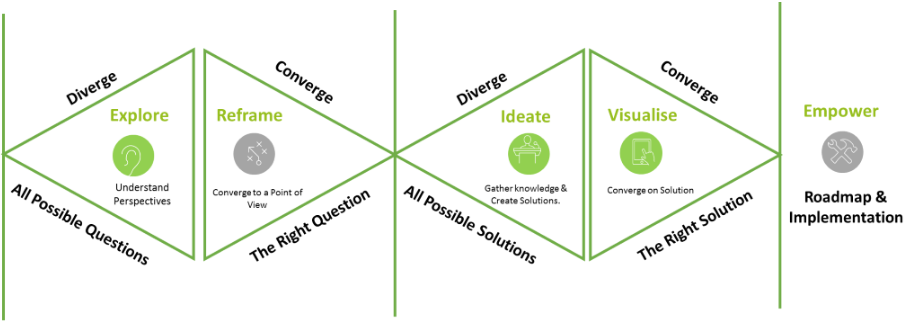Understanding the Innovation Process
There are a plectra of innovation models and processes out there and all with their own structures and benefits. In general, they all tend to follow the same stages
- Idea Generation:
- Idea Screening
- Concept Development and Testing
- Preliminary Market and Technical Assessment
- Development
- Commercialisation
However, the problem with most of these innovation models is the user is seen as the research object and innovation is being done on to them. In these models the user is a passive recipient of the innovation process such as gathering user requirements from them or testing the concept/product with them. However, they are not seen has an active participant and a truly integral part of the innovation process. Hence, the high failure rates of new products and services. Numerous research studies conducted by RIKON shows that coordinating new product development activities and resources with users during innovation stages can be a valuable means of reducing the uncertainty associated with new product development, enhancing the development process and increasing the likelihood of success. However, despite the potential benefits of user involvement, our research has shown a slow up take of the phenomenon among practitioners.
Part of the problem is that the innovation models themselves do not facilitate participative innovation and a user centred innovation process. Based upon over 1000 innovation projects conducted in RIKON, we have designed a five stage be-spoke innovation process, which allow us to effectively tackle the most complex innovation challenges for our clients.
A Strategic Framework for Innovation
Bringing science to the art of strategy, RIKON’s user-led innovation process involves imagination, intuition, and systematic reasoning to solve wicked problems by exploring, experimenting and visualising the possibilities of what could be (i.e. future state) in order to arrive at a customer centric design solution that is fit for purpose, risk-free and produces extraordinary results that leapfrog the expected.

The innovation process consists of five stages.
Explore – we conduct the mapping of existing business challenges, SWOT external analysis, industry trends, competitors best practice analysis.
Reframe – we interpret the insights from the Explore stage and translate this into meaning for the client and identify the key challenges and problems.
Ideate – we brainstorm and create numerous solutions to the identified problem.
Visualise – converging on solutions. We attempt to visualise the intangible and make it tangible.
Empower – closing out the project. We provide a roadmap of action points to assist you in implementing your new innovative strategy.
Inherent within the innovation process is a number of central innovation principles:
Principle 1: “ We Diverge to Converge”. Our innovation process encompasses divergent and convergent modes thinking. The divergent mode is about exploration (seeking) where as convergence is solution oriented.
Principle 2: “Innovation Starts and Ends with People”. The core foundation of our innovation process is Empathy. Everyone has a story and through empathy we can understand the way users view the world and what is meaningful for them in order to produce customer centric solutions.
Principle 3: “Harvest the Minds of the Many”. Successful innovation comes from the minds of the many and it is through collaboration where ideas and solutions are found. Leverage the collective intelligence of your network of interdisciplinary disciplines and backgrounds.
Principle 4: “Fail Early and Often”. There will always be ambiguity and mistakes made during the innovation process. Embrace it and extract the learnings and experiment early to arrive at the correct solution.
Principle 5: Visualize the Future State. Ideas must be examined and producing low-fidelity prototypes facilitates discussions and insights with others.

